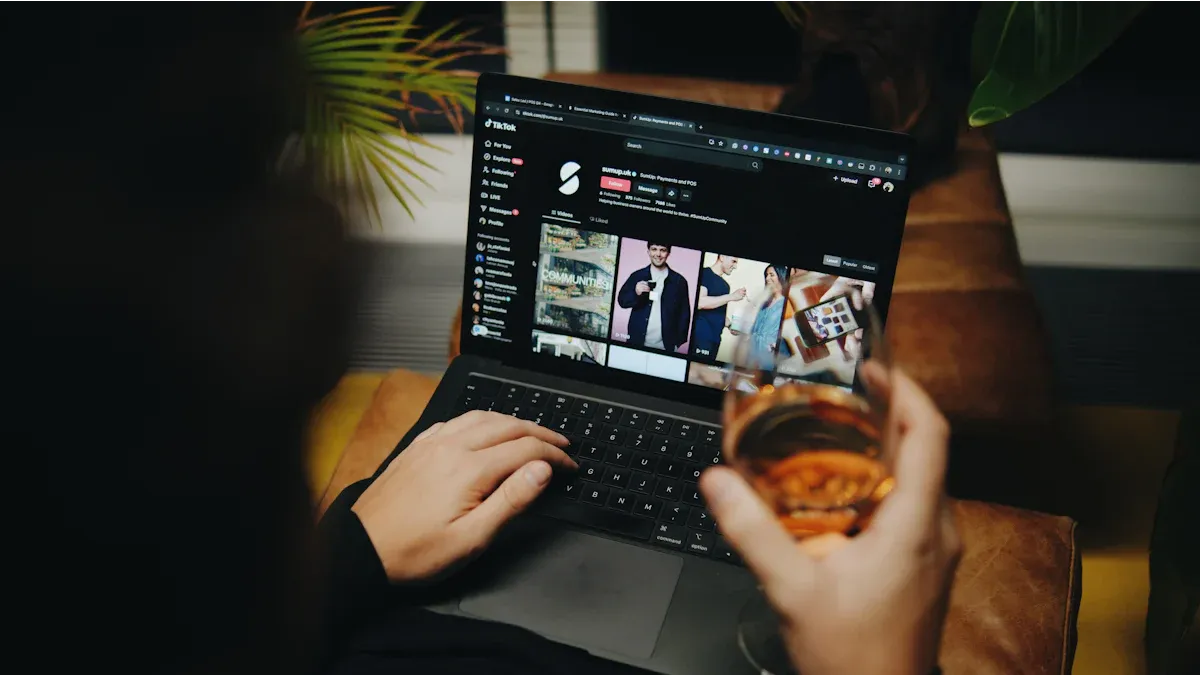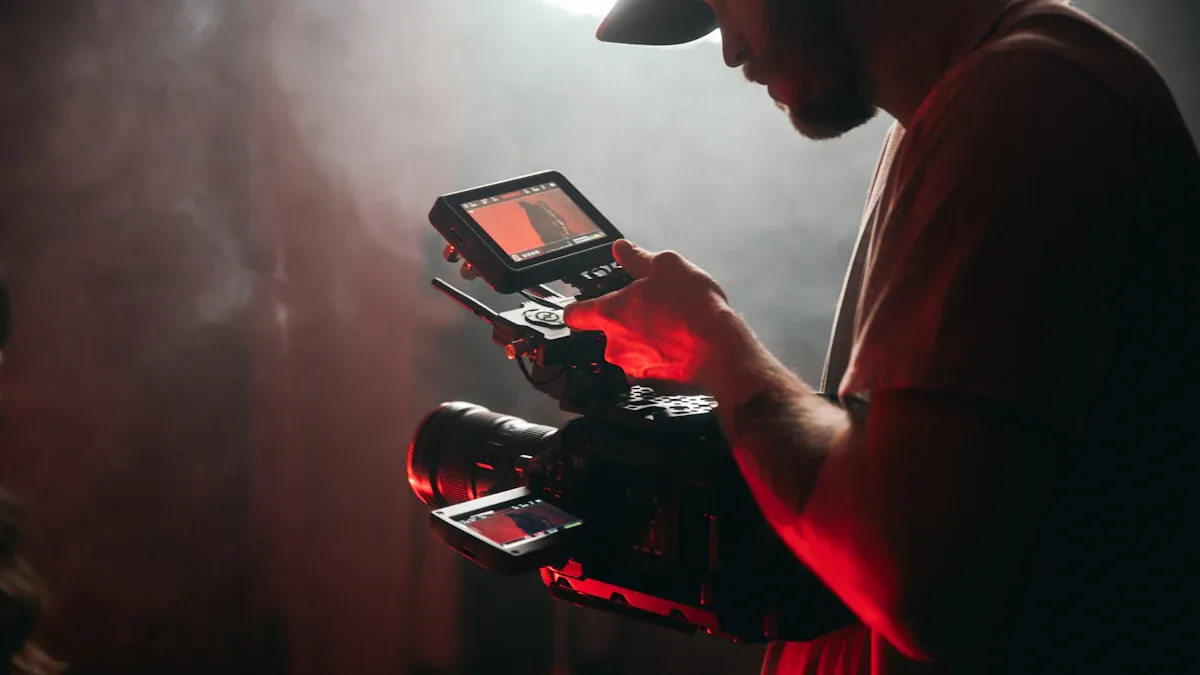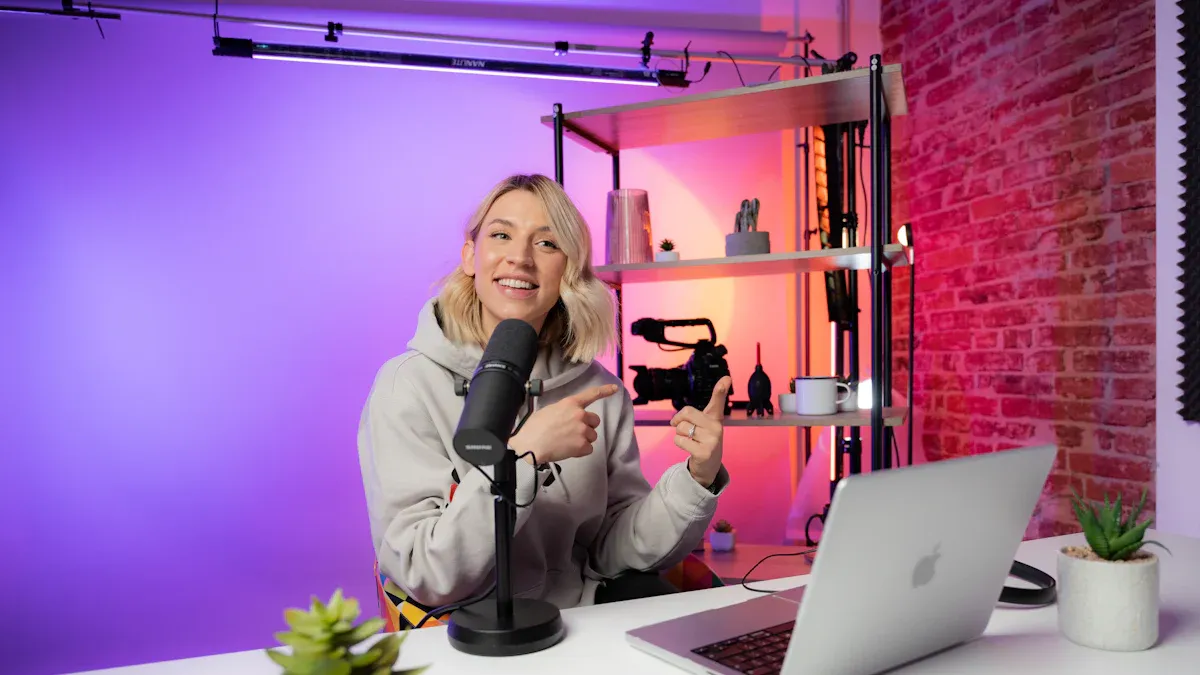AI Influencers Redefining the Creator Economy

AI influencers are changing how brands reach their audiences. By 2025, more than 60% of marketers will use AI to find influencers and improve campaigns. The global AI market, worth $142.3 billion now, may grow to $500 billion by 2025. This shows how important AI is for the economy. AI-made content makes work easier and saves marketers many hours weekly. It also helps them get more done in less time. Campaigns using AI often perform three times better than regular ones. AI influencers are creating new strategies and shaping the future of marketing.
Key Takeaways
AI influencers are virtual characters that help brands by making custom content and talking to people all day and night.
Using AI in ads can save up to 30% of money, helping brands use their funds better.
Mixing AI and human influencers makes campaigns better since both have special skills.
Being honest is important; brands should say when AI makes the content to keep trust.
Marketing will mix human creativity with AI's speed and efficiency in the future.
Understanding AI Influencers

What Are AI Influencers?
Characteristics of AI influencers versus human influencers
AI influencers are fully digital characters made with artificial intelligence. They are not real people and only exist online. These virtual influencers act like humans, showing emotions and interacting realistically. They talk to followers by replying to comments and making custom content. Unlike humans, they work nonstop on many platforms, reaching people worldwide.
Key Feature | Description |
|---|---|
Artificially created personas | AI influencers are digital characters made with AI technologies to act like humans. |
Realistic interactions | They interact with people in a human-like way, replying to comments and creating custom posts. |
Content creation | They are programmed to make high-quality content that matches what audiences like. |
Scalability | They work 24/7 on many platforms, reaching people everywhere without limits. |
Human influencers, however, are real and relatable. Their true stories and emotions connect with people personally. While AI influencers are great at being efficient and reaching many, human influencers are still important for their creativity and real connections.
Examples of prominent AI influencers in 2025
By 2025, virtual influencers are very popular. Lil Miquela, one of the first AI influencers, is still famous on Instagram with her realistic photos and fun stories. Another example is Shudu, a virtual model known for her beautiful looks and work with luxury brands. These AI influencers have changed the creator economy by mixing technology with creativity, setting new trends in marketing.
How AI Influencers Work
The role of machine learning and data in creating AI personas
Machine learning is key to making AI influencers. It helps analyze data quickly and create updates fast. AI technologies use 3D modeling to make lifelike looks and natural language tools to talk like humans. This lets virtual influencers interact smoothly with their followers.
Aspect | Description |
|---|---|
Role of ML | Machine learning helps create AI personas by analyzing data and making updates fast. |
AI Influencers | AI influencers use advanced tools to keep branding and audience engagement consistent. |
How AI influencers engage audiences and brands
AI influencers connect with people by making custom, high-quality posts. They study what audiences like and adjust their content to match. For brands, these virtual influencers are a cheaper option for marketing. They can join many campaigns at once, staying active without needing breaks. Their ability to fit brand needs makes them a big part of future marketing.
The Economic Impact of AI Influencers in 2025
Cost Efficiency and Scalability
Lower production costs and global scalability of campaigns
AI influencers save money and help campaigns grow worldwide. Unlike human influencers, they don’t need travel or physical resources. Brands can create and manage an AI influencer for just a few hundred dollars each year. This low cost lets companies spend more on planning and connecting with audiences.
AI campaigns can grow easily. Virtual influencers work nonstop on many platforms, reaching people everywhere without extra costs. This helps brands share their message globally while keeping it consistent.
How AI influencers reduce campaign expenses by up to 30%
AI influencers make marketing cheaper by automating tasks and improving content. Studies show they cut campaign costs by 30%. For example:
AI tools study what people like, helping brands target better and waste less money.
Automated systems handle tasks, saving time and reducing labor costs.
AI-made content is cheaper to produce but still looks great.
These savings make AI influencers important for businesses in the creator economy.
Market Growth and Projections
The projected $22.2 billion influencer marketing platform market
The influencer marketing market is growing fast because of AI. By 2025, it could reach $22.2 billion, growing at 32.07% yearly from 2024 to 2028. This shows how much brands depend on AI to make campaigns better and clearer.
Forecast Period | Projected Growth (USD) | CAGR (%) |
|---|---|---|
2024-2028 | 52.23 billion | 32.07 |
2025-2032 | 71.04 billion | 17 |
Industries benefiting most from AI-driven campaigns
Many industries grow with AI campaigns. Retail and e-commerce use AI for personalized ads. Fashion and beauty brands use virtual influencers to show off products. Gaming and entertainment attract younger audiences with AI. These examples show how AI changes marketing in different fields.
The Impact of Campaigns with Lillian
How Lillian optimizes influencer marketing strategies
Lillian, an AI marketing tool, changes how brands use influencers. It studies over 120 million data points to find the best influencers for a brand. Lillian gives real-time advice, helping brands make smart plans. It also improves content so campaigns connect with the right audience.
Lillian’s role in recommending AI and human influencer resources
Lillian helps brands mix AI and human influencers. It looks at the strengths of both types to suggest the best mix. For example, Lillian might recommend a virtual influencer for wide reach and a human influencer for personal touch. This balance makes campaigns stronger and more successful in the long run.
Implications for Content Creation
Automation and Personalization
Creating highly personalized content on a large scale
AI has changed how influencers make content by personalizing it. Machine learning studies user habits to guess what they like. Tools like natural language processing help match content to audience needs. This lets influencers create posts that connect well with followers. For example, AI tools pick the best times and styles for posts. This can boost engagement by up to 30%. Brands gain more sales and loyal customers, making AI personalization key in 2025.
Metric | What It Measures | Improvement Goal |
|---|---|---|
Engagement Rate | Time spent, scrolling, and interactions | |
Conversion Rate | Users completing actions like buying | 10-15% better |
Customer Lifetime Value | Total worth of a customer over time | 15-25% better |
Net Promoter Score | How likely users recommend your brand | 10-20 points higher |
How automation makes work easier
Automation helps by doing boring, repeated tasks for influencers. AI finds the right audience, tracks results, and gives tips to improve. Influencers can focus on being creative while AI handles data and planning. Tools like A/B testing and suggestions improve campaigns. This mix of automation and creativity makes influencer marketing more effective.
Risks of Too Much AI Content
The danger of too much AI-made content
Too much AI-made content could overwhelm audiences. If many influencers use AI, posts might feel the same. This could lower interest and trust in campaigns. Being original is important to stand out online.
Ways to stay unique and real
To avoid too much sameness, influencers need to be real. Mixing AI with human creativity keeps content fresh and relatable. Trying new formats and adding real-life touches can keep followers interested. Brands should watch how audiences feel and adjust plans to keep trust.
Lillian’s Help with Content Strategies
How Lillian balances AI and human creators
Lillian helps brands use both AI and human influencers wisely. It studies lots of data to find what each does best. Lillian suggests using AI for efficiency and humans for personal connections. This makes campaigns work for different types of audiences.
Examples of success with Lillian
Brands using Lillian have seen great results. For example, a clothing store used an AI influencer for global reach and a human one for storytelling. This mix raised engagement by 40% and increased sales. These successes show how Lillian shapes the future of influencer marketing.
Challenges and Ethical Considerations
Authenticity and Transparency
Keeping audience trust with AI influencers
Trust is very important in influencer marketing. AI influencers need to seem real to keep people interested. Research shows people follow AI influencers as much as human ones if they feel genuine. For example, Lil Miquela, a top AI influencer, has a 2.7% engagement rate, similar to human influencers. This proves AI can build trust when done right. But brands must make sure AI influencers match their values and audience needs to keep trust over time.
Why it’s important to share AI-made content
Being honest is key in the creator economy. People like honesty, and saying content is AI-made builds trust. A study found 63% of people trust influencers more than regular ads. This shows how important clear and honest AI influencers are. For instance, H&M’s campaign with virtual influencer Kuki boosted ad recall by 11 times. This proves that being open works well. Brands should always tell audiences when influencers are AI to stay ethical and avoid confusion.
Ethical Concerns
Privacy and bias issues in AI influencer marketing
AI uses lots of personal data, which raises privacy worries. Using data without permission can break trust and harm privacy rights. Also, AI systems can be unfair, showing bias in race, gender, or income. To fix this, AI creators need to be open and fair. Ethical marketing must protect data and treat everyone equally to stay trustworthy.
Problems with misleading AI influencers
If not used carefully, AI influencers can cause trust issues. People might feel tricked if they don’t know an influencer is AI. Also, AI suggestions lack real emotions, which are important for trust. Some places now require clear rules for influencer honesty. Brands need to follow these rules to avoid misleading people and stay ethical in their campaigns.
Lillian’s Ethical Framework
How Lillian helps brands with ethical marketing
Lillian gives tools and advice to handle ethical problems in marketing. It ensures honesty by showing detailed reports on influencer work and audience reactions. Lillian also protects user data with secure systems. These tools help brands create campaigns that follow ethical rules and build trust with audiences.
How Lillian builds trust and honesty in campaigns
Lillian supports honesty by suggesting clear ways to show AI influencers are not human. It helps brands mix AI and human influencers to keep campaigns real and relatable. For example, Lillian’s data insights help brands pick the right influencers, improving trust and results. By focusing on ethical plans, Lillian helps brands succeed in the future of influencer marketing.
The Hybrid Future of Human and AI Influencers

Collaboration Between Human and AI Influencers
How human influencers complement AI personas
Human influencers bring creativity and emotions to campaigns. They share personal stories and connect deeply with people. AI influencers are great at using data and working nonstop. Together, they balance each other’s strengths for better results.
Brands now mix human and AI influencers for success. For example, Kellogg’s updated Tony the Tiger with AI features. This mix kept the emotional connection while adding real-time AI interactions. Such teamwork shows how human creativity and AI precision work well together.
Examples of successful hybrid campaigns
Influencer | Brands | Focus | Strategy | Results | Key Learning |
|---|---|---|---|---|---|
Imma | IKEA, Porsche | Fashion and Lifestyle | Realistic design, cultural themes | Top industry engagement | Culture matters in campaigns |
Ruby Gloom | Adidas | Cultural Fusion | Mix of tradition and modern looks | Strong local appeal | Authenticity is key |
Rae | Multiple | Beauty and Fashion | Multi-platform posts, quick content updates | Fast follower growth, high engagement | Versatility leads to success |
These examples show how combining human and AI influencers works well.
The Evolving Role of Human Influencers
Why human creativity and relatability remain essential
Human influencers are still important in 2025. They build trust and loyalty by being relatable and creative. Unlike AI, they understand culture and show real emotions. This helps them form lasting bonds with their followers.
Studies show Generation Z likes both human and virtual influencers. This trend pushes brands to create relatable content. Human influencers, with their unique ideas, meet these needs and stay relevant.
How human influencers can differentiate themselves in an AI-driven market
Human influencers can stand out by focusing on their strengths. They should share personal stories, host live chats, and make cultural content. Working with AI influencers can also help them reach more people while staying authentic.
For example, Rozy, a virtual influencer from South Korea, became popular by acting relatable. This shows how blending human-like traits with AI can succeed. Human influencers can learn from this to stay competitive.
Lillian’s Vision for the Future
How Lillian supports brands in navigating the hybrid influencer landscape
Lillian helps brands use both human and AI influencers wisely. It studies millions of data points to find the best mix. Lillian’s advice helps brands use AI for scale and humans for emotional connections. This balance makes campaigns work for all audiences.
For instance, Lillian helped a fashion brand use a virtual influencer for global reach. A human influencer added storytelling. This mix boosted engagement by 40%, proving hybrid models work well.
Predictions for the next phase of the creator economy
The creator economy will grow with hybrid influencer models. Brands will focus on being real and efficient. Virtual influencers will target specific groups, while human influencers build trust.

Lillian sees a future where brands mix AI and human influencers smoothly. Its data insights help brands adjust to market changes. This ensures growth and innovation in influencer marketing.
AI influencers are changing how the creator economy works. They save money, grow campaigns, and bring new ideas. By automating tasks, they make personalized content faster. This boosts productivity, with 83.82% of campaigns working better. The chart below shows how AI speeds up content creation:

It’s important to solve problems like trust and fairness. Checking things like user interest and post success helps keep campaigns honest. These checks make sure content stays useful and reliable.
The future of marketing will mix human and AI influencers. Humans add creativity and emotions, while AI brings accuracy and speed. Together, they make content that connects with many people.
Lillian is key in this change. It studies over 120 million data points to help brands use both AI and humans well. Its smart advice helps brands grow and succeed in the fast-changing creator economy of 2025.
FAQ
What are AI influencers, and how are they different from humans?
AI influencers are digital characters made with artificial intelligence. They work all the time, creating content based on data. Human influencers use their creativity and emotions to connect with people. Both types work well together in marketing.
Why will AI influencers matter to brands in 2025?
AI influencers help brands save money on global campaigns. They study what people like and make custom content. By 2025, their ability to improve marketing will make them very important for brands.
How does Lillian assist with influencer marketing?
Lillian makes marketing easier by studying over 120 million data points. It finds the best influencers, gives quick advice, and mixes AI with human resources. This helps brands run better campaigns.
Can AI influencers fully replace human influencers?
AI influencers are great at working fast and reaching many people. But they don’t have the emotional touch that humans bring. Combining both types creates the best results.
What ethical issues come with AI influencers?
AI influencers bring up concerns about honesty and privacy. Brands should tell people when content is AI-made and follow fair practices. Tools like Lillian help keep trust by being clear and protecting data.
